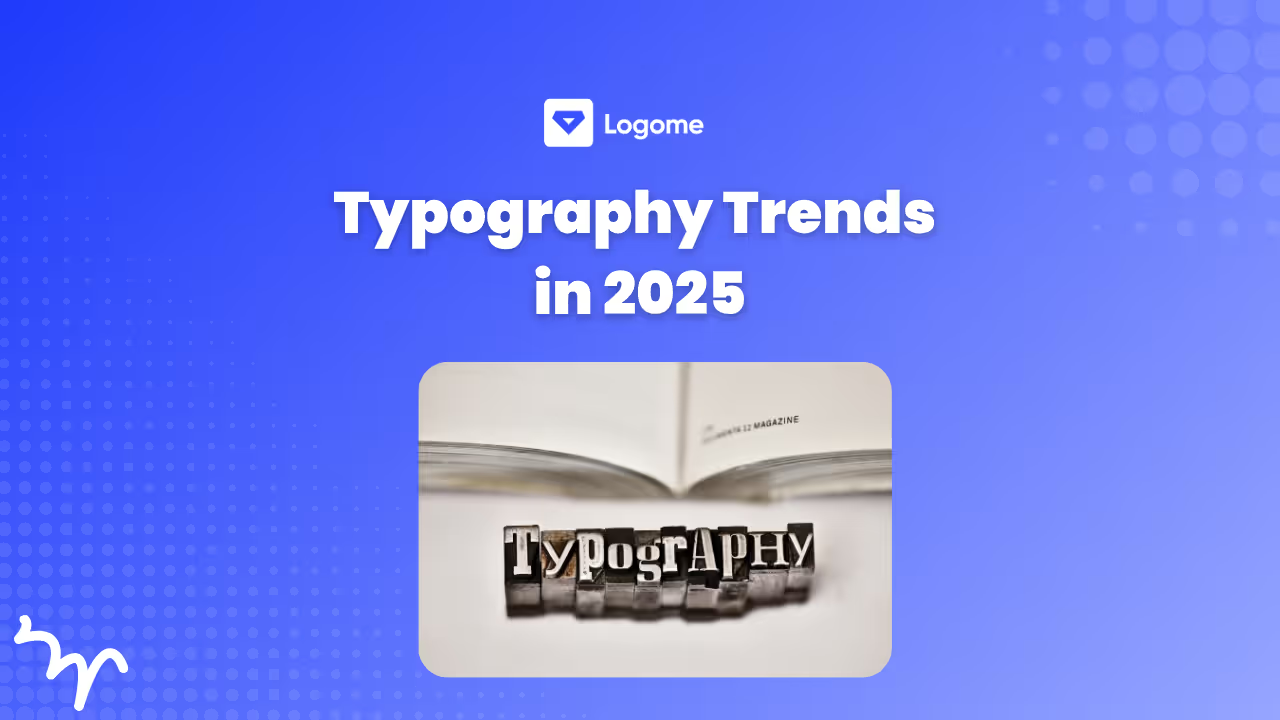Google Logo History, Meaning, and Evolution
The meaning, full history, and evolution of the Google logo
The meaning, full history, and evolution of the Google logo

Google's logo, with its simple yet vibrant design, is a prime example of this principle. Over the years, it has become one of the most recognizable symbols worldwide, representing the brand's innovative and user-friendly approach.
From its early days as "BackRub" to its current form, the Google logo's evolution mirrors the company's journey from a university project to a global technology powerhouse.
The story of Google's logo starts in 1996 with its first origination, BackRub. This early search engine laid the groundwork for what would become one of the most influential companies in the world.
Before Google became the tech giant it is today, the founders Larry Page and Sergey Brin created a search engine called BackRub. The original BackRub logo was quite different from what we now associate with Google.

It featured a simple design with a red font spelling out "BackRub" alongside an image of a hand. This initial logo was functional but lacked the playful, innovative spirit that Google would soon embody.
In 1997, Page and Brin decided to rename their search engine to Google. The name was a playful twist on the mathematical term "googol," which refers to the number 1 followed by 100 zeros. This new name symbolized the company's mission to organize an immense amount of information available on the web.
With the new name, Google needed a new logo that reflected its innovative approach. The first Google logo introduced a playful, multicolor design with an exclamation mark, much like the style popular among tech companies of the time. Created using a free image editor called GIMP, this logo featured primary colors to signify the brand's playful and approachable nature. The use of multiple colors also represented the diversity of information Google aimed to organize and provide access to.

As Google evolved, so did the need for a logo that accurately reflected its growing influence and professionalism. This led to a major redesign phase in the late 1990s and early 2000s.
Around this timeline, it became clear that the original playful logo needed a more refined and professional touch to represent the company's unique identity. In 1999, Ruth Kedar, a Stanford assistant professor, was brought in to redesign the logo.
Ruth Kedar’s involvement marked a significant turning point in the evolution of the Google logo. Known for her innovative design approach, Kedar was tasked with creating a logo that would be both playful and professional, capturing the essence of Google’s brand.
Kedar experimented with various designs, each incorporating different fonts and color schemes.

Her designs ranged from intricate, detailed logos to simpler, more straightforward versions. Throughout this process, she balanced the playful nature of the company with a more polished, professional look.
Ultimately, she settled on the use of the Catull typeface, which combined the traditional with the contemporary.

The final design, using the Catull typeface, became the official Google logo from 1999 to 2010. This logo was characterized by its clarity and playful nature, helping to establish Google’s brand identity during its formative years. The use of the Catull typeface added a touch of elegance while the multicolor scheme retained the logo's playful spirit.

As Google continued to grow and adapt to new technologies and user needs, its logo underwent further refinements to stay current and versatile. This period marked a significant transition towards a cleaner and more modern visual identity.
In 2010, Google made subtle yet impactful changes to its logo. The color palette was adjusted to be slightly more vibrant, and the shadows that gave the letters a three-dimensional appearance were removed.

These updates resulted in a cleaner and more streamlined look, aligning with modern design t rends and enhancing the logo's legibility across various media.
In 2015, Google introduced a major rebranding effort that included the adoption of the Product Sans typeface.

This new sans-serif typeface was designed to be more versatile, ensuring that the logo could be easily read on a wide range of devices and screen sizes, from smartphones to desktop monitors.
The switch to Product Sans marked a move towards simplicity and modernity. The sans-serif typeface not only provided a cleaner look but also improved the logo's adaptability across different digital platforms.

This change was crucial as Google continued to expand its services and presence in an increasingly mobile-first world. The familiar multicolor pattern was retained, ensuring continuity and brand recognition while the overall look was simplified for greater clarity.
Along with the introduction of the Product Sans typeface, Google added dynamic elements to its branding. Notably, the Google dots—four animated circles—were introduced for voice search interactions.

These dots animate in various ways, such as bouncing when a voice search is initiated, transforming into an equalizer when listening, and rippling when processing. These dynamic elements added a modern, interactive touch to Google's brand, making it more engaging for users.
Google's creativity and playful spirit are perhaps best exemplified by its Doodles. These temporary alterations of the Google logo are designed to celebrate holidays, events, and notable figures, adding a unique and engaging twist to the brand's identity.

The concept of Google Doodles originated in 1998, a time when the company was still in its early stages. The very first Doodle was a simple stick figure placed behind the second "o" in the logo to indicate that the founders, Larry Page and Sergey Brin, were attending the Burning Man festival.

This quirky touch served as a sort of "out of office" message, letting users know where the founders were.
From this humble beginning, the idea of Google Doodles quickly evolved. These Doodles serve multiple purposes: they commemorate important dates, celebrate cultural events, and honor the achievements of historical figures. Each Doodle transforms the familiar Google logo into a canvas for creativity, engaging users and showcasing the company’s personality.
Over the years, Google Doodles have highlighted a vast array of events and milestones. For example, Doodles have celebrated historical anniversaries like the birth of Charles Darwin, cultural moments such as the Lunar New Year, and global events like the Olympic Games.

These designs not only add a playful element to the Google homepage but also educate users about diverse topics and figures.
One notable example is the Doodle created for the 30th anniversary of Pac-Man in 2010.

This interactive Doodle allowed users to play a fully functional version of the classic arcade game directly on the Google homepage, generating significant buzz and engagement.
Another memorable Doodle was the one celebrating the life of Frida Kahlo, which not only honored the artist’s legacy but also highlighted her contributions to culture and art.

The Google logo is more than just a colorful arrangement of letters; it’s a carefully crafted symbol that embodies the company’s philosophy and approach to technology.
The Google logo employs a vibrant palette of primary colors (red, blue, yellow) along with a secondary color (green).

This color scheme is not arbitrary. The choice of primary colors represents simplicity and primary building blocks, reflecting Google's foundational role in organizing the world’s information. The addition of green, a secondary color, breaks the pattern, symbolizing Google's unconventional and innovative approach. This playful use of colors signifies the company’s intent to break away from the norm and constantly innovate.
Google's logo is designed to be simple yet impactful. The clean, sans-serif font and the bright, bold colors make it easily recognizable and memorable. This simplicity aligns with Google’s mission to make information accessible and easy to use.
The playful nature of the design, evident in the use of vibrant colors, mirrors the company's culture of creativity and innovation. This approachability and friendliness help in reinforcing Google’s identity as a user-centric and forward-thinking company.
Google is not alone in using subtle design elements to convey deeper meanings. For example, the Amazon logo features a smile-shaped arrow pointing from A to Z, signifying that Amazon offers everything from A to Z and emphasizes customer satisfaction.

Similarly, the FedEx logo includes a hidden arrow between the E and X, symbolizing speed and precision in delivery services.

These logos, like Google’s, use clever design tricks to communicate core values and brand promises.
The evolution of the Google logo tells the story of the company's growth and ability to adapt. From the early days of the BackRub logo to the sleek, dynamic design we see today, each change has strengthened Google's brand identity. This journey highlights Google's commitment to innovation and staying relevant, ensuring that the logo remains both recognizable and modern.
Google’s logo has continuously evolved, maintaining brand recognition while embracing new design trends. This adaptability showcases Google’s focus on user engagement and its proactive approach in a fast-paced digital world.
A strong logo is vital for building and sustaining a brand's identity. The evolution of Google’s logo demonstrates the importance of keeping designs simple yet adaptable. By prioritizing clarity, playfulness, and adaptability, Google’s logo stands as a powerful symbol of innovation and reliability. This ongoing evolution not only reinforces the brand's identity but also keeps the logo fresh and engaging, which is essential for maintaining user interest and trust over time.
If you're looking to create a logo that embodies these principles, consider using Logome. Logome offers an AI-driven platform to help you design logos that are both innovative and reliable, ensuring your brand stays fresh and engaging.



Discover how 500,000+ businesses and creators are using our AI logo maker in their Logo creation.



